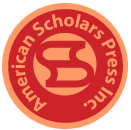JIBE - Instructions for Authors
General Submission Guidelines:
-
ORIGINAL:
All submissions must be original and previously unpublished work. By submitting any material to IMR , you agree that your work published in IMR is original and not being considered for another publication, unless otherwise specifically acknowledged. -
COPYRIGHT:
After publication, the authors do not reserve the right to present any part of their research in any form in other publications or proceedings. IMR reserves the right to reproduce and reprint any materials published for instructional and promotional purposes. -
STYLE:
Submitted work must use the APA (American Psychological Association) editorial style -
LENGTH:
6-10 pages including appendix.
Preparation of Manuscripts:
Word Processor and Format: We accept most word processor documents and wordprocessing formats, but Word is most preferred. If the file is not created in Word, we prefer you make a special note to the editor. It is important that the file be saved in the native format of the wordprocessor used. The text should be in single-column format. Keep the layout of the text as simple as possible. Please try not to use special options to format the text or to hyphenate words. But you can use bold face, italics and underline.
About Graphics and Tables: Do not import the figures/graphic into the text file but, instead, provide the original drawings or indicate their approximate locations directly in the electronic text and on the manuscript. Do not embed "graphically designed" equations or tables, but prepare these using the wordprocessor's facility. When preparing tables, if you are using a table grid, use only one grid for each individual table and not a grid for each row. If no grid is used, use tabs, not spaces, to align columns.
Abstract, Keyword, Reference, and Author Bio:
Abstract: A concise and factual abstract is required (maximum length 100 words). The abstract should state briefly the purpose of the research, the principal results and major conclusions. An abstract is often presented separate from the article, so it must be able to stand alone.
Keyword: Add three to five keywords to your article. Each keyword (which can be a phrase of more than one word) should describe one single concept. Often words like "and" or "of" should be avoided. Try not to use abbreviations unless an abbreviation is so well-established that the full term is rarely used.
References: APA style is used for reference. Arrange the items on your reference list alphabetically by author, interfiling books, articles, etc. Indent the second and following lines 5 to 7 spaces or one half inch. Use only the initials of the authors' first (and middle) names.
The following are suggested styles excerpted from the APA style web site:
Journal or Magazine Article (use for journals that start each issue with page one)
Wilcox, R. V. (1991). Shifting roles and synthetic women in Star Trek:
The Next Generation. Studies in Popular Culture, 13(2), 53-65.
Journal or Magazine Article (use for journals where the page numbering continues from issue to issue)
Dubeck, L. (1990). Science fiction aids science teaching. Physics
Teacher, 28, 316-318.
Newspaper Article
Di Rado, A. (1995, March 15). Trekking through college: Classes
explore modern society using the world of Star Trek. Los Angeles
Times, p. A3.
Article from an Internet Database (for more details, see the American Psychological Association's official site)
Di Rado, A. (1995, March 15). Mershon, D. H. (1998, November-December). Star Trek on the brain:
Alien minds, human minds. American Scientist, 86, 585. Retrieved
July 29, 1999, from Expanded Academic ASAP database.
Book
Okuda, M., & Okuda, D. (1993). Star Trek chronology: The history
of the future. New York: Pocket Books.
Book Article or Chapter
James, N. E. (1988). Two sides of paradise: The Eden myth according
to Kirk and Spock. In D. Palumbo (Ed.), Spectrum of the fantastic
(pp. 219-223). Westport, CT: Greenwood.
Encyclopedia Article
Sturgeon, T. (1995). Science fiction. In The encyclopedia Americana
(Vol. 24, pp. 390-392). Danbury, CT: Grolier.
ERIC Document
Fuss-Reineck, M. (1993). Sibling communication in Star Trek: The Next
Generation: Conflicts between brothers. Miami, FL: Annual Meeting
of the Speech Communication Association. (ERIC Document
Reproduction Service No. ED 364932)
Website (for more details, see the American Psychological Association's official site)
Lynch, T. (1996). DS9 trials and tribble-ations review. Retrieved
October 8, 1997, from Psi Phi: Bradley's Science Fiction Club
Web site: http://www.bradley.edu/campusorg/psiphi/DS9/ep/503r.html
Citations in Text Materials: To cite a specific part of a source, indicate the page, chapter, figure, table, or equation at the appropriate point in text. Always give page numbers for quotations. Note that the words page and chapter are abbreviated in such text citations:
(Cheek & Buss, 1981, p. 332)
(Shimamura, 1989, chap. 3)
Author Bio: Please include a brief biography about yourself and research areas within 100 words.
Although these guidelines are not mandatory, they should be adhered to where possible. Please make sure that the paper is submitted in its final form. Corrections in the proof stage other than printer's errors should be avoided. Footnotes should be avoided if possible.


